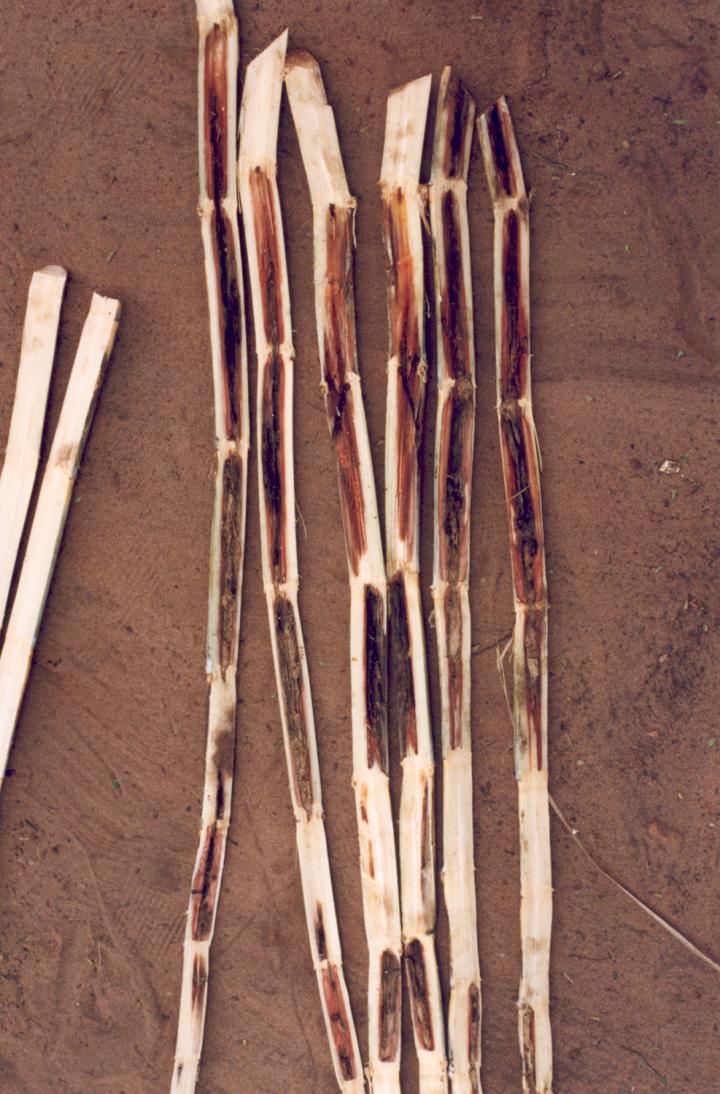Researchers at the University of São Paulo discover that the fungus Fusarium verticillioides uses volatile compounds to manipulate insects and plants, promoting its own dissemination
The fungus Fusarium verticillioides is one of the causes of red rot, the most serious sugarcane disease. Losses average around USD 1 billion per harvest in Brazil alone.
The traditional approach to the etiology of this disease is that it is triggered by Diatraea saccharalis, a moth usually referred to as the sugarcane borer. In the caterpillar stage, this insect bores into the stem of the plant, which is later infected opportunistically by the fungus.
However, a study conducted in Brazil by the University of São Paulo’s Luiz de Queiroz College of Agriculture (ESALQ-USP) has turned this model upside down, showing that the trigger is not the insect but the fungus. “It’s the first scientifically demonstrated case of a pathogenic fungus manipulating both its vector [the insect] and host [the plant] for its own benefit,” José Maurício Simões Bento, a professor at ESALQ-USP and one of the principal investigators for the study, told.
An opportunistic fungus does not depend on vectors but infects the host by entering it through a lesion in its structure. This case is different. F. verticillioides changes the characteristics of the vector and host to promote its dissemination. “We establish a new paradigm for the association plant-insect-fungus in sugarcane plantations,” Bento said.
The group’s findings are reported in an article entitled “Fungal phytopathogen modulates plant and insect responses to promote its dissemination”, set to publish on June 14 in the prestigious ISME Journal, the official Journal of the International Society for Microbial Ecology, owned by Springer Nature.
“Previously the moth was the target and the idea was that the fungus merely took advantage of holes made in the stem by its caterpillars. We discovered this is not the case. The fungus manipulates the insect in order to penetrate the plant and manipulates the plant to attract more insects,” said Márcio de Castro Silva Filho, also a professor at ESALQ-USP and co-principal investigator for the study.
Through several experiments, the researchers discovered that sugarcane plants infected by F. verticillioides produce volatile compounds that are irresistible to pregnant females of the moth Diatraea saccharalis. Attracted by these compounds, the moths lay their eggs in the plants. When the caterpillars hatch, they penetrate the stems and are themselves attracted by the volatile compounds, which they ingest. When they enter the pupal stage and develop into adult moths, they are already carriers of the fungus.
###
About São Paulo Research Foundation (FAPESP)
The São Paulo Research Foundation (FAPESP) is a public institution with the mission of supporting scientific research in all fields of knowledge by awarding scholarships, fellowships and grants to investigators linked with higher education and research institutions in the State of São Paulo, Brazil. FAPESP is aware that the very best research can only be done by working with the best researchers internationally. Therefore, it has established partnerships with funding agencies, higher education, private companies, and research organizations in other countries known for the quality of their research and has been encouraging scientists funded by its grants to further develop their international collaboration. You can learn more about FAPESP at http://www.
Media Contact
Heloisa Reinert
[email protected]
Related Journal Article
http://dx.





